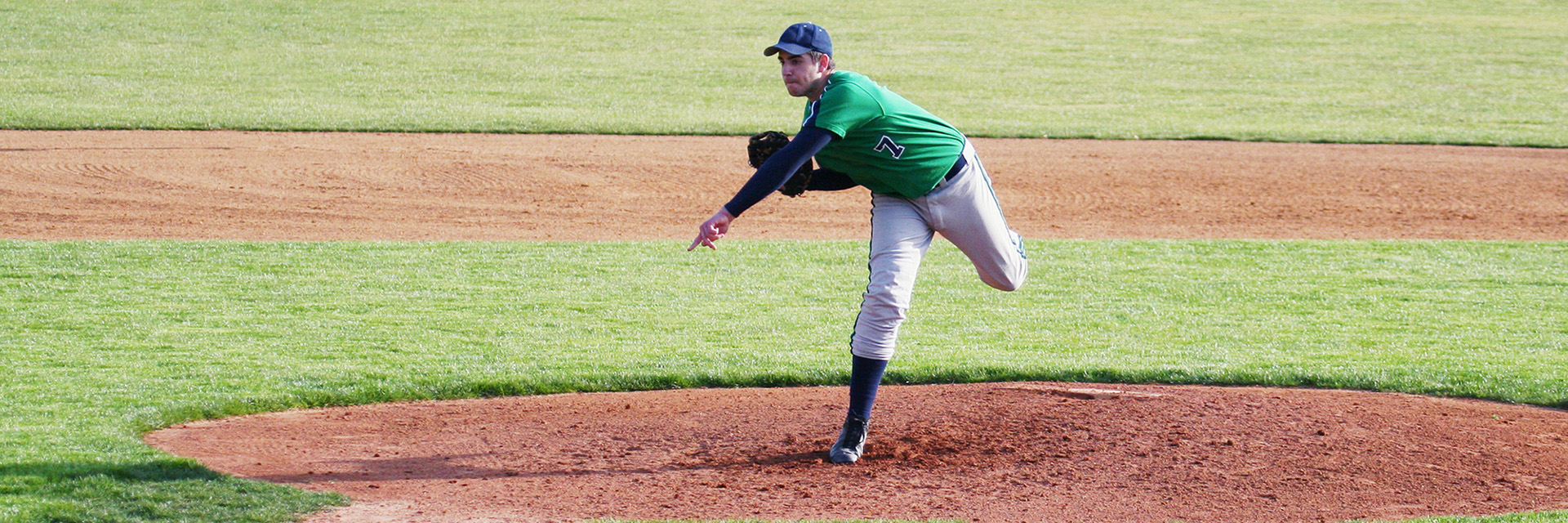If you have a young athlete, you know youth sports have come a long way from the days when you might have played. Long gone are the days of playing once a year for short seasons. Now even elementary-aged kids are playing increasingly competitive sports, often year-round, which can be tough on their small, growing bodies.
All that activity has made overuse injuries common in youth sports, especially in baseball or softball, says Paul Whatley, M.D., a sports medicine and orthopedic specialist on the medical staff at Texas Health Alliance and at Orthopedic Surgery Specialists, a Texas Health Physicians Group practice.

“When I was a kid, baseball was only in the spring and early summer, so kids had plenty of time to recover from any issues attributed to repetitive movements and stress,” he says. “Now, in order to keep up with everyone else, there is intense pressure for players to go from the spring season directly into summer ‘All-Star’ tournaments and showcases, followed by ‘Fall Ball.’ Consequently, there can be very little time for the body to recover from a sport where repetition is the key to developing the muscle memory for success. That repetition can have consequence on the joints, tendons, and ligaments, unfortunately.”
According to the American Journal of Sports Medicine, young pitchers put themselves at risk of injury if they:
- Throw too many innings over the course of a year. Youths who pitched more than 100 innings in a year were 3.5 times more likely to have an injury.
- Play for multiple teams at the same time
- Continue throwing despite arm fatigue. Pitchers who did so were 36 times more likely to suffer an injury
- Play more than 8 months in a year
- Participate in showcases
Common Overuse Injuries
While throwing the ball is not a movement exclusive of just pitchers, pitchers are especially at risk of overuse injuries due to the number of times they can throw the ball in one game. The action of pitching a baseball includes five steps: wind-up, early cocking, late cocking, acceleration and follow-through. When this movement is performed over and over at a high rate of speed, it puts substantial stress on the growth areas of the elbow and the anatomical structure of the shoulder, especially in the late cocking and follow-through phases.
Because of this, some of the most common injuries seen in baseball players affect the shoulder and elbow.
- Muscle strain: Muscle strains happen when athletes have partial tears or stretch injuries to their muscles. They are classified as Grade 1, 2 or 3, depending on how severe the injury is. Grade 1 is just a stretching injury of the muscle. Grade 3 is a complete tear.
- Labral tear: This injury is a disruption or stretching to the structure surrounding the socket part of the shoulder, known as the glenoid. The labrum gives stability to the shoulder, so when it’s disrupted or torn, it makes the shoulder potentially unstable.
- Glenohumeral Internal Rotation Deficit (GIRD): This is a loss of the shoulder’s ability to internally rotate, due to the increased amount of external rotation required to throw at high velocity/power. This loss of normal shoulder motion predisposes these young athletes to internal impingement of their rotator cuff tendons, and labral tears.
- UCL tear: Partial, and even complete, tears of the ulnar collateral ligament in the elbow are very common, and get a lot of notoriety.
“This ‘Tommy John’ injury used to really only be seen in college and professional athletes, but now high school kids make up almost 60% of Tommy John surgeries performed in the U.S.,” Whatley says. “Anyone who has ever watched a pitcher in slow motion sees how much valgus (outward bending) occurs in the elbow during the late cocking and acceleration phases of throwing. This amount of stress can easily wear down, and sometimes even acutely tear the ligament.”
- Thrower’s elbow: Also known as medial epicondylitis, this syndrome causes pain on the inside part of a thrower’s elbow. It creates enough discomfort that the thrower not only notices the pain, but it also affects their throwing motion.
- Knee injury: “We also can’t forget about the catchers,” Whatley adds. “Those knees take quite a beating from repetitive squats and jumping up for throw-downs. I’ve seen tons of catchers with cartilage irritation under their knee caps, and patellar tendonitis.”
Preventing Injury
“The most important thing is to get enough rest,” Whatley cautions. “While there is significant pressure to ‘keep up with the Joneses,’ especially if your child wants an athletic scholarship, taking part of the year off and cross-training in a non-throwing sport definitely lowers their risk of developing an overuse injury that could lead to burn-out. A good rule is at least 2-4 months out of the year with no overhead throwing.”
A good guideline for rest period after throwing is:
- 31-50 pitches = one day off
- 51-75 pitches =two days off
- Anything over 75 pitches = three days off
“Of course, this can be adjusted for age and level of fitness,” Whatley adds.
In addition to rest, Whatley suggests these other methods to help your athlete avoid the need for surgery and decreases their risk for overuse injuries:
Work with a qualified pitching coach
A pitching coach can evaluate your athlete’s pitching technique and also identify any mechanical issues with their pitch.
“The human body is great at adapting, but there is definitely an ideal arm angle to keep the forces about the shoulder and elbow in balance. Working with a qualified pitching coach is key to learn proper form at a young age,” says Whatley.
Stop playing through pain
Pain when pitching is an indication that there is a structural problem at some level, and it is almost never just a “sore muscle that needs to work itself out,” Whatley adds. If anything hurts, it’s better to stop, rest and/or get treatment than to play through the pain.
Improve strength and flexibility
Learn how to use more muscle groups, especially larger muscles like those in the thighs, core, and back, to take the strain off the elbow when pitching. This not only decreases the risk of elbow injuries, it also leads to faster pitching. A sports physical therapist can identify your child's weaknesses and teach exercises that maximize core, trunk, and back strength. They can also teach ways to improve shoulder flexibility, which will decrease injury risk.
Warm-up adequately before each practice or game
Another key is adequate warm-up, stretching, and improving flexibility — even more than strength.
“I recently attended a sports meeting where Tom Brady educated us on the key to his longevity, and it was all focused on stretching and flexibility,” Whatley explains. “When a thrower wants to focus on strengthening, the attention should be spent on strengthening the core, trunk, and back. A strong core increases velocity and protects the elbow and shoulder.”
Mind your pitch counts
For younger athletes, guidelines have been developed to help Little League® coaches and parents determine the ideal number of pitches per game and week and how much rest he or she needs before returning to the mound based on the athlete’s age.
“Pitch counts have helped reduce overuse injuries, and most youth leagues have adopted them in some form. It is important to abide by those, but prevention by proper training is the way to minimize the risk of overuse,” Whatley explains.
Treatment of Minor Overuse Injuries
Despite an athlete’s best efforts to prevent injury, he or she may still experience pain or problems. Minor overuse injuries usually first manifest as pain during the activity. When this happens, stop doing what hurts for a while.
“Missing a few days is not going to put you behind,” Whatley says. “Ice, stretching, and even some anti-inflammatory medication taken for a short period of time can be beneficial for the older athletes.”
However, Whatley warns that if something feels unstable, if a loud “pop” or “snap” is felt, or if there is a significant loss of velocity or accuracy, seek a higher level of care.
The Takeaway
Many youth leagues nowadays can feel just as competitive as adult leagues, but it’s important to remember children’s bones and muscles are still growing and they should not be performing or expected to perform at the same level of an adult. While you may invest a lot of money and time to developing your young athlete’s skills, and of course you want them to have as much of a competitive edge as they can, at the end of the day, they are still a child and require rest and recovery just as anyone else.
“The mental stress young athletes go through has been very evident in the last two Olympics, and burn-out happens all of the time,” Whatley adds. “A scholarship is only valuable if the kid still loves playing, and keeping varied interests in different sports, or even music and arts, will pay equal or more dividends than an extra tournament in the heat of August will.”.
The AOSSM offers sport-specific injury prevention tips for youth athletes. To learn more about sports injuries, visit TexasHealth.org/SportsMedicine.
Find an orthopedic surgeon or sports medicine specialist in your area.

